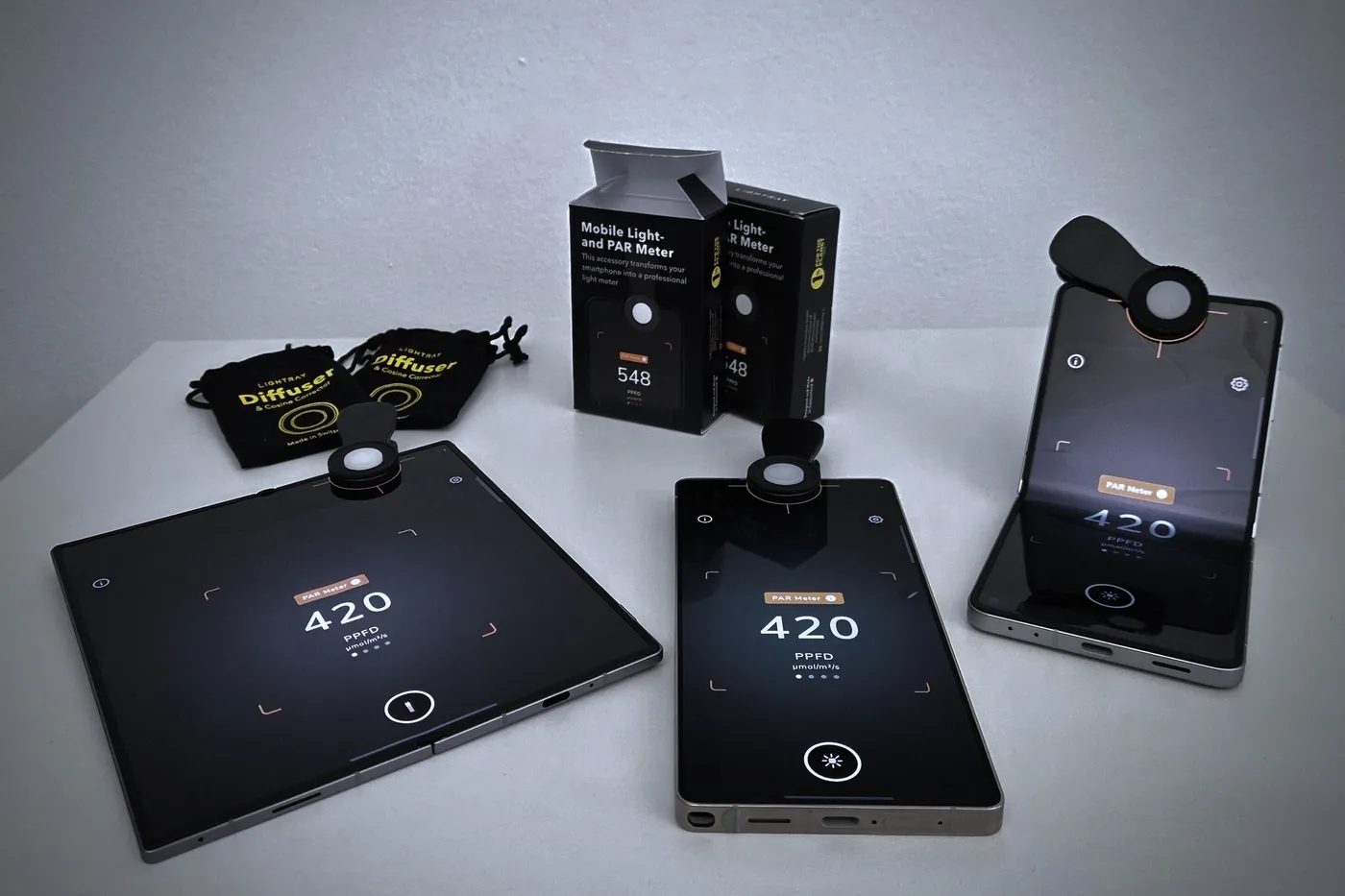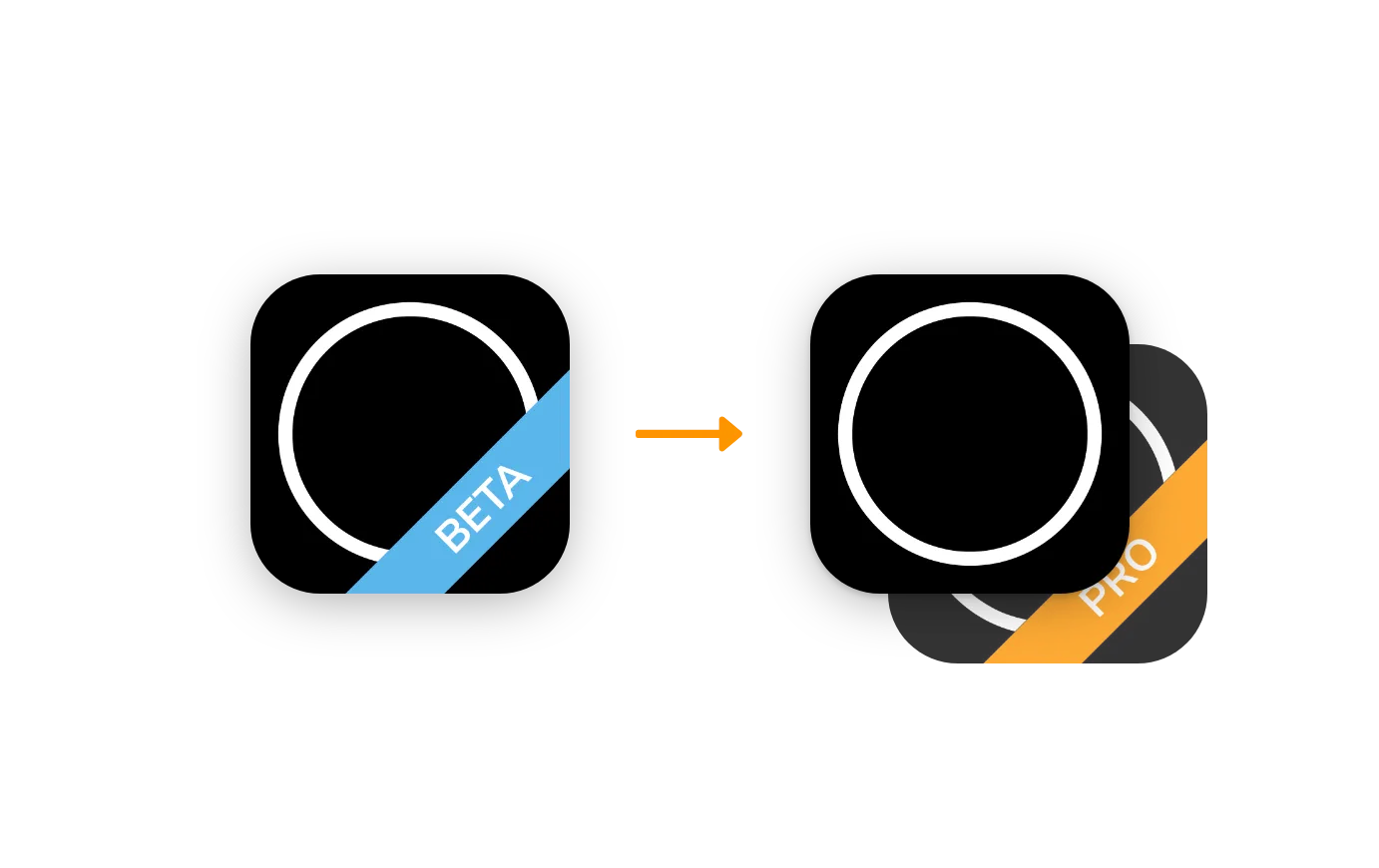
Auto-Translate
As we all know, lighting is extremely important when it comes to living organisms such as plants, animals, and even humans. Measuring photosynthetically active radiation (PAR) is crucial in assessing the quantity and quality of light for plants. PAR, measured as photosynthetically active flux density (PPFD), is not only the most important measure of light in terrestrial photobiology research for plants and crops, but also for underwater plants such as corals and other reef plants. If you’re new to this, we recommend our other article explaining PAR / PPFD and why measuring lux or foot-candle is of no use.
Contents
Reef Lighting
The entire reef ecosystem depends on light for photosynthesis, which is the process where corals derive 80-85% of their energy from. Furthermore, reef lighting stimulates the corals' chromoproteins that are responsible for creating beautifully vivid and vibrant colors within your reef aquarium.
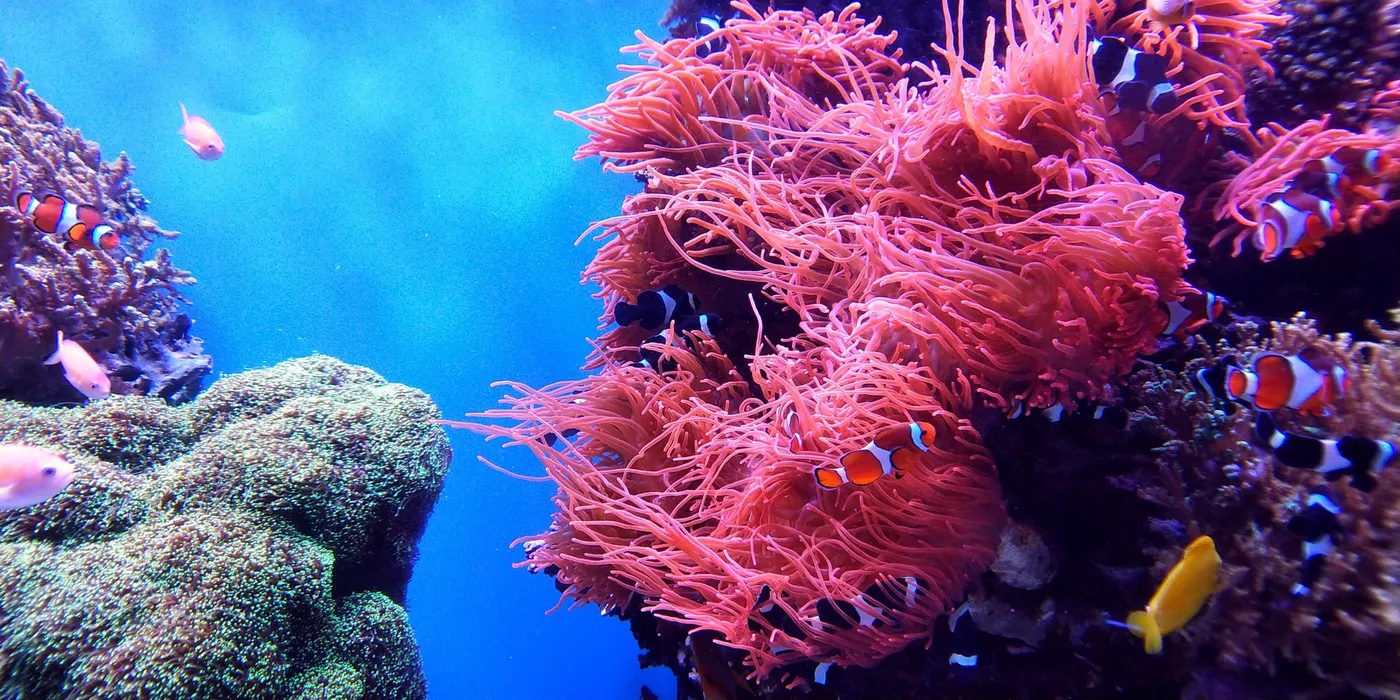
Underwater PAR Measurements
Traditional meters, such as an Apogee MQ-500 PAR meter, are calibrated in air. As the optical properties of air and water are different, quantum PAR meters provide only relative values underwater.
A phenomenon called the immersion effect must be considered when using a PAR meter to take absolute PPFD measurements in an aquarium. Companies identified this need and products such as the Seneye Reef or the Apogee MQ-510 Full-spectrum Underwater Quantum Meter have been developed and already apply an immersion effect correction factor (IECF) in their measurement. Luckily, you don’t need all of that equipment and can just simply use our PAR meter app to measure under water.
PAR Meters Compared
We tested the measurement performance of the Apogee PAR Meter with the applied immersion effect correction factor and compared it to our app on iOS and on Android.
There is a lot of existing science on the immersion effect correction of PAR meters also covering the experimental setup to do so. Based on Hooker & Zibordi’s publication, we used a matte-black painted container in combination with LED quantum boards to provide adequate lighting. Our reference sensor is a $500 Apogee SQ-520 Full-spectrum “Smart” Quantum Sensor that provides both an air and a water mode with the included software.
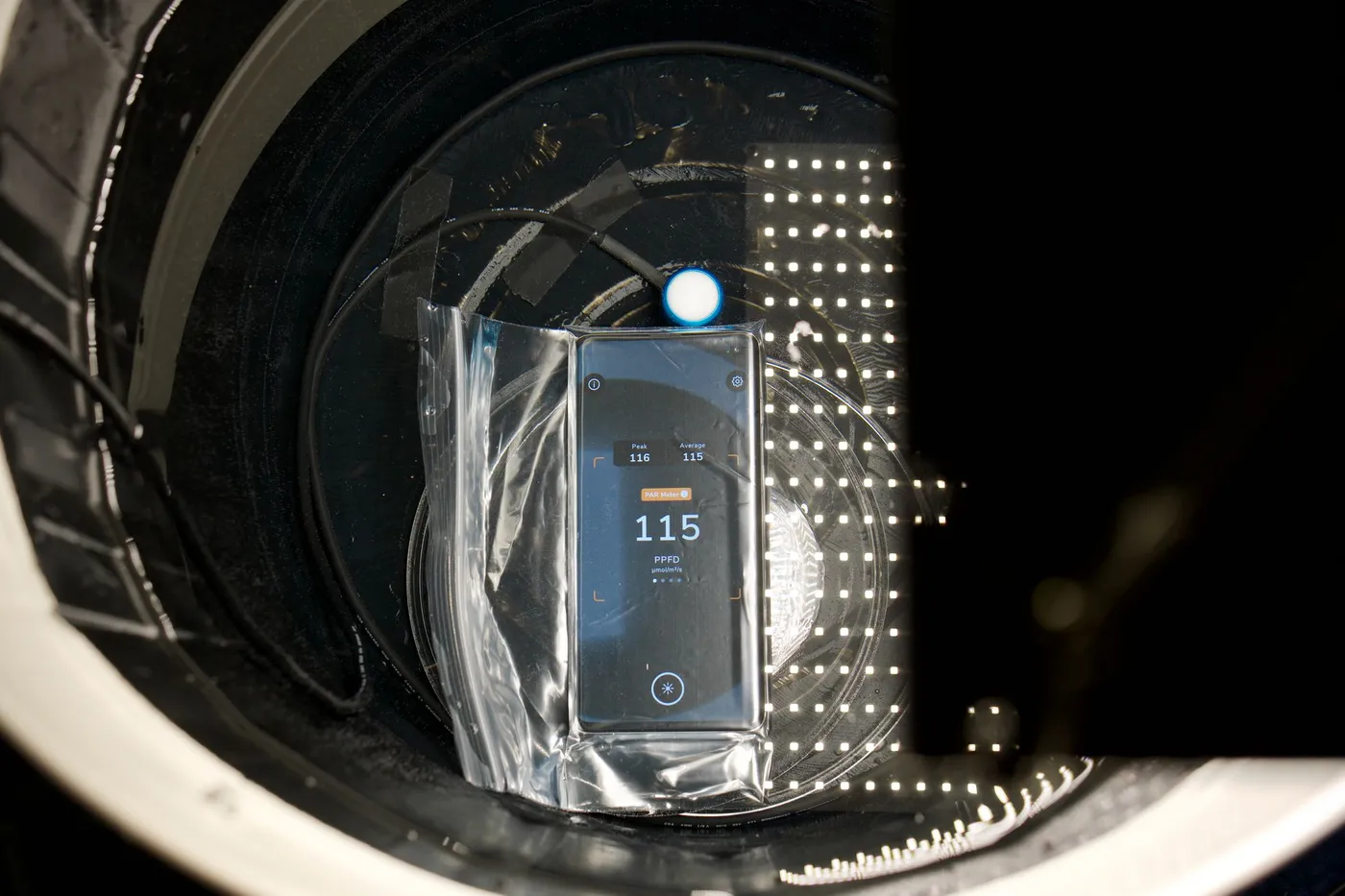
We tested three different Android smartphones as well as three different iOS devices. On iOS we were using a simple paper diffuser as required by the app. All smartphones were put in a clear plastic bag before submerging them.
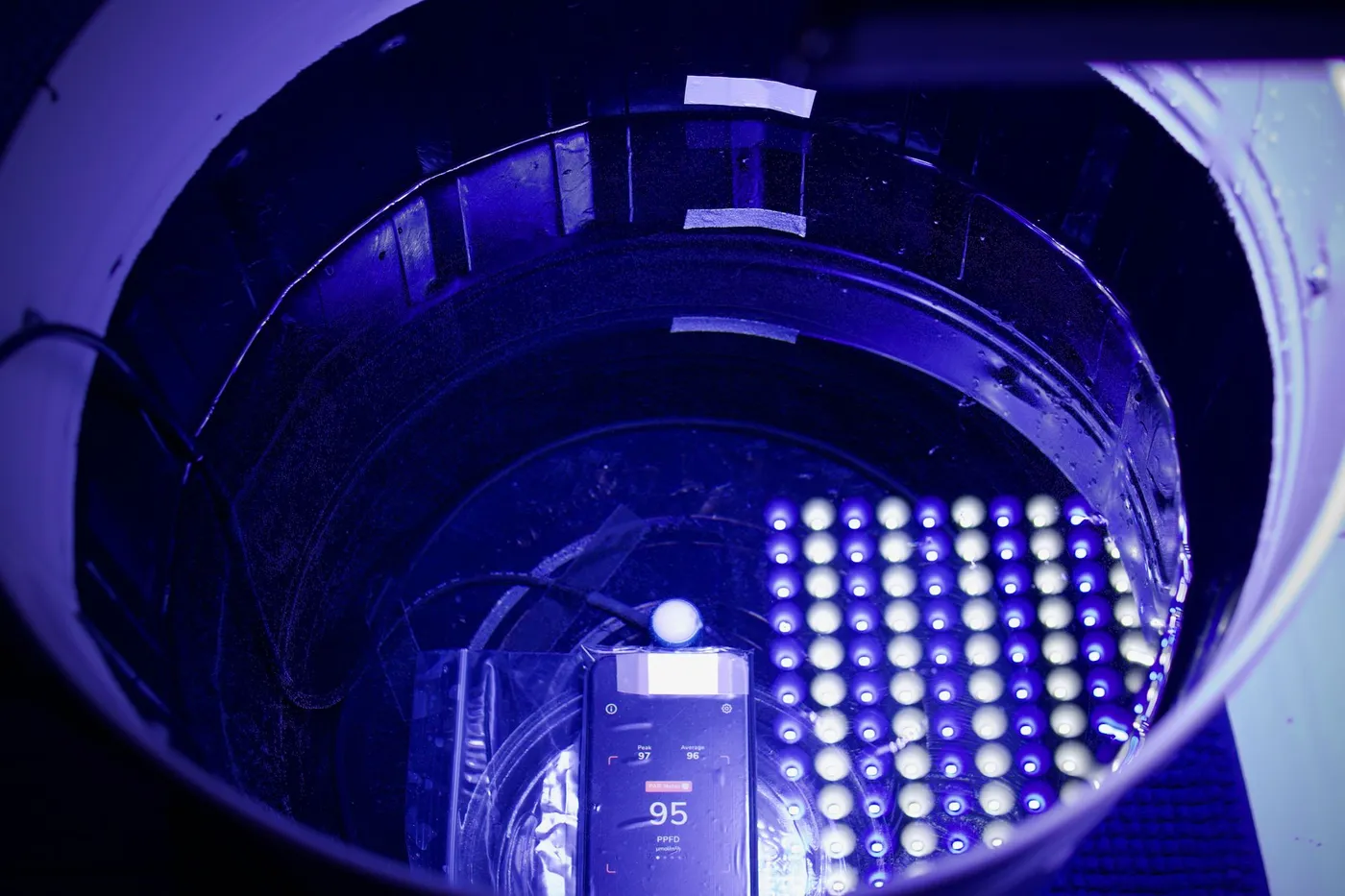
We then added regular tap water and took measurements at depths of 5 cm, 15 cm, and 25 cm, or 2”, 6”, and 10” respectively. The obtained measurements were then scaled so that the measurement without any water constitutes as the reference point, meaning a deviation of 0.
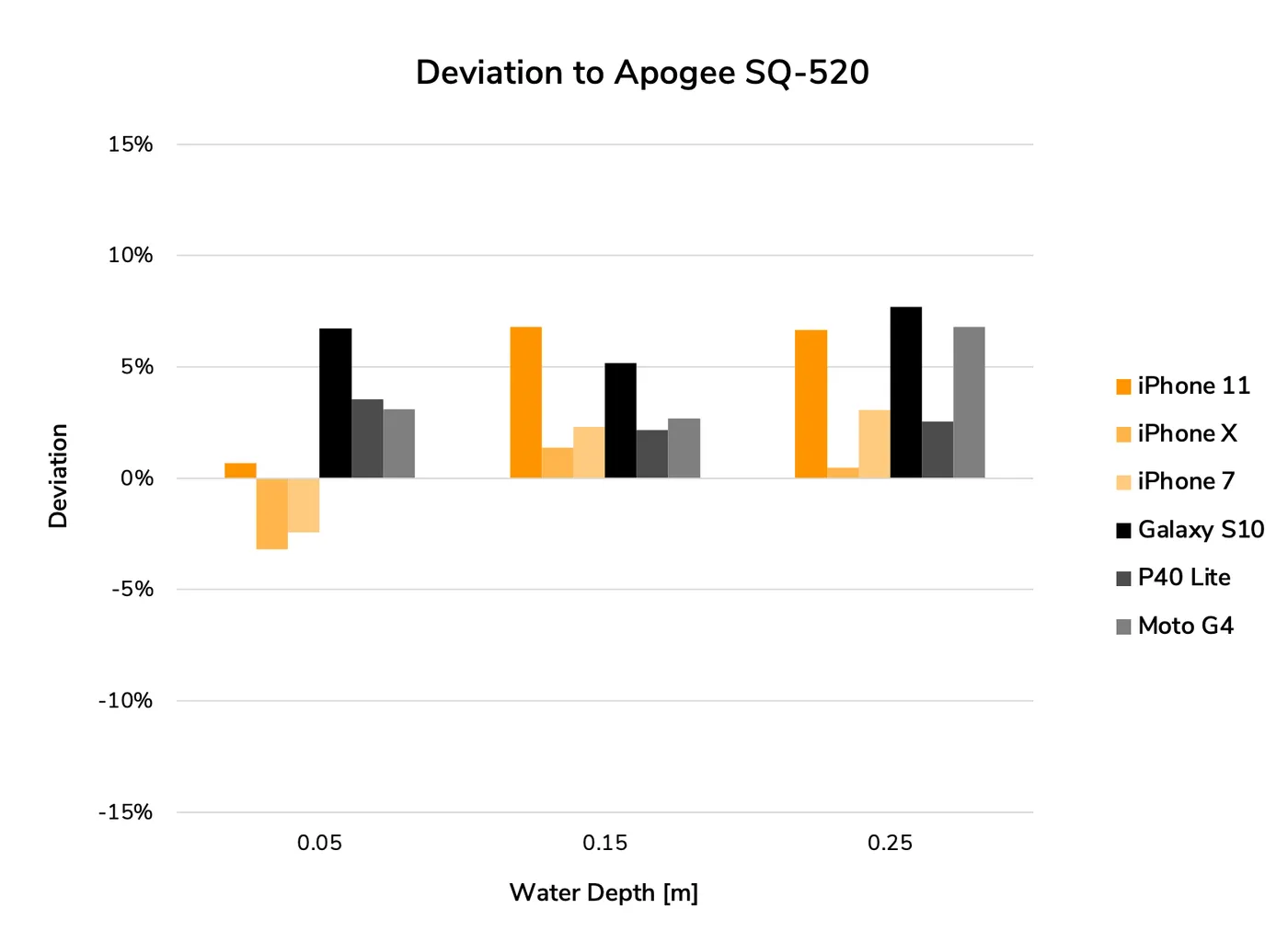
As can be seen, the deviation to the Apogee Quantum PAR Sensor generally lies within a few percent. In our test, the worst case error compared to the $500 Apogee sensor lies at 7.7% with the median being 2.2% more than the Apogee sensor’s measurement. As the Apogee sensor itself has a specified accuracy of ±5% in air, we consider the deviation of our app negligibly small.
Using Our App For Underwater PAR Measurements
If you want to save the $500 for a Quantum Meter you should definitely give our Grow Light Meter app a try. As you can see in our measurements, there is absolutely no issue in using it under water – it just needs a bit of preparation and some adjustments. Step-by-step instructions to waterproof the app can be found in our guide.
New To Our App?
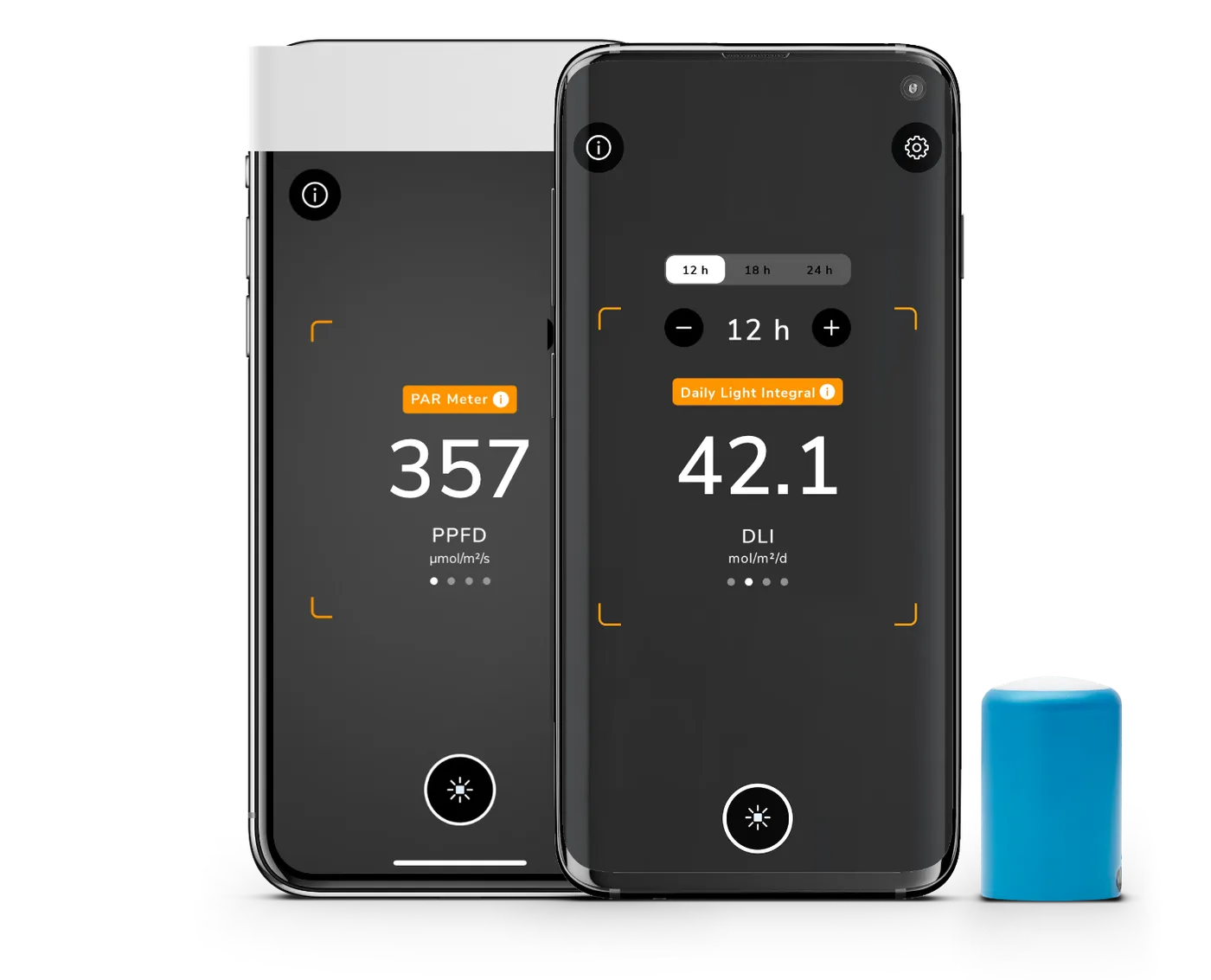
In case you aren't already using our app, we can fully and confidently recommend to use our grow light meter for any light measurement desires. We even wrote a white paper covering the topic of how to achieve the highest accuracy as possible.
Thank you for reading!

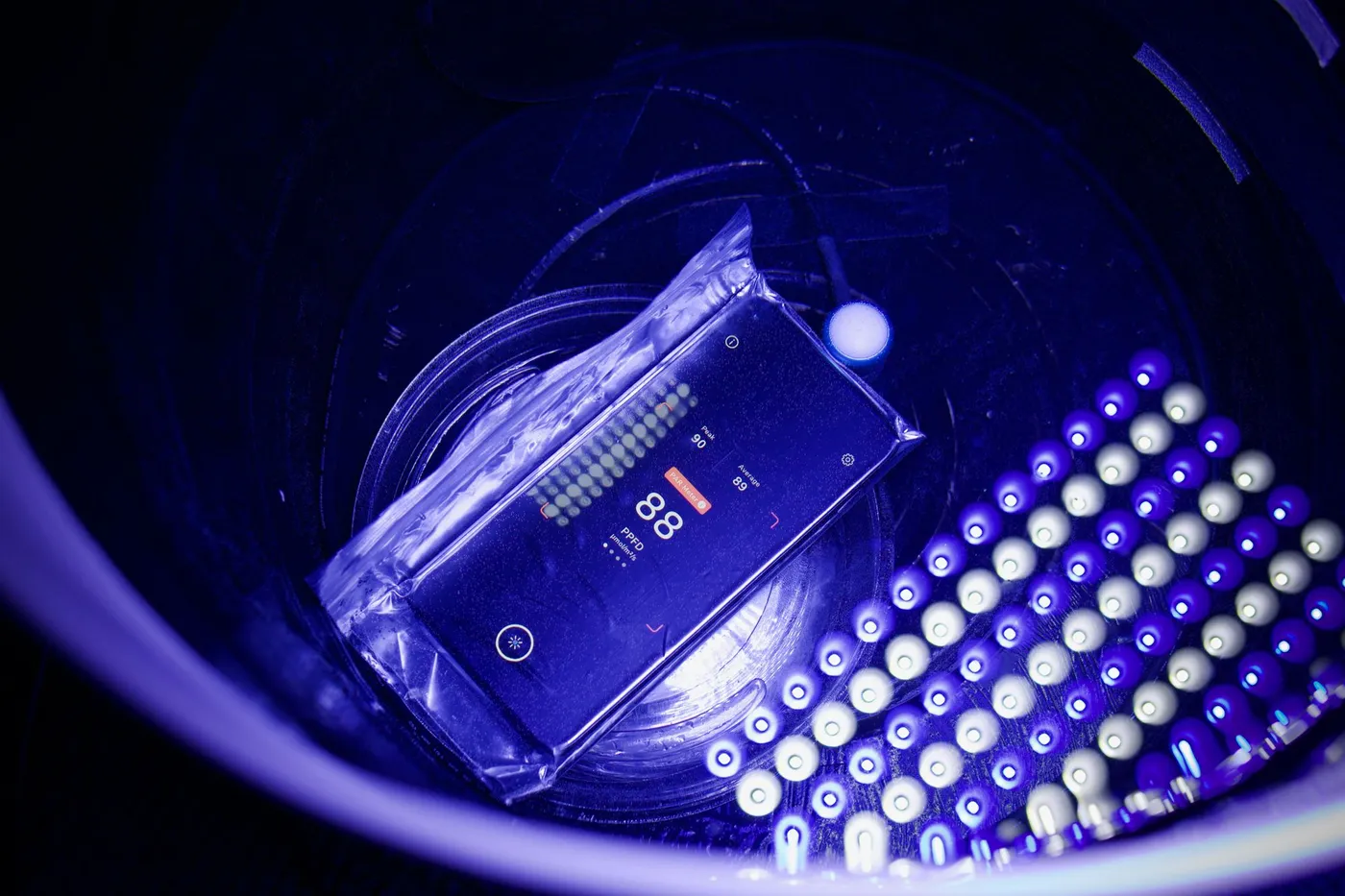
 Share This
Share This



